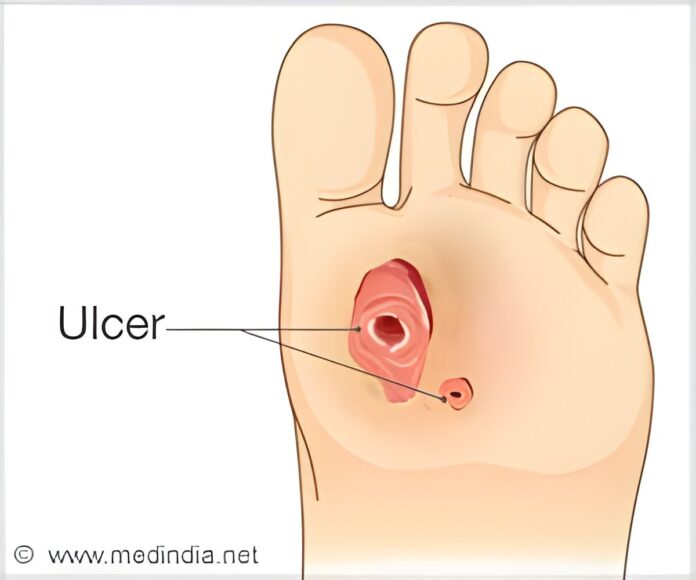Smart insoles track posture and gait in real time, helping detect early signs of health conditions.
A new smart insole system tracks real-time walking patterns to help improve posture and detect early signs of conditions like plantar fasciitis and Parkinson’s disease. Equipped with 22 pressure sensors and powered by solar panels on the shoes, the system monitors gait—a movement pattern as unique as a fingerprint—for personalized health insights. (1✔ ✔Trusted Source
A Wireless, Self-Powered Smart Insole for Gait Monitoring and Recognition via Nonlinear Synergistic Pressure Sensing
Go to source
)
This complex personal health data can then be transmitted via Bluetooth to a smartphone for quick and detailed analysis, said Jinghua Li, co-author of the study and an assistant professor of materials science and engineering at The Ohio State University.
“Our bodies carry lots of useful information that we’re not even aware of,” said Li. “These statuses also change over time, so it’s our goal to use electronics to extract and decode those signals to encourage better self health care checks.”
Advancements in Wearable Insole Technology for Gait Analysis
It’s estimated that at least 7% of Americans suffer from ambulatory difficulties, activities that include walking, running or climbing stairs. While efforts to manufacture a wearable insole-based pressure system have risen in popularity in recent years, many previous prototypes were met with low energy limitations and unstable performances.
To overcome the challenges of their precursors, Li and Qi Wang, the lead author of the study and a current PhD student in materials science and engineering at Ohio State, sought to ensure that their wearable is durable, has a high degree of precision when collecting and analyzing data, and can provide consistent and reliable power, said Li.
“Our device is innovative in terms of high resolution, spatial sensing, self-powering capability, and its ability to combine with machine learning algorithms,” she said. “So we feel like this research can go further based on the pioneering successes of this field.”
The study was recently published in the journal Science Advances.
This team’s system is also made unique through its use of AI. Using an advanced machine learning model, the wearable can recognize eight different motion states, including static ones like sitting and standing to more dynamic movements such as running and squatting.
Additionally, since the materials the insoles are made of are flexible and safe, the device, much like a smartwatch, is low-risk and safe for continuous use. For instance, after the solar cells convert sunlight to energy, that power is stored in tiny lithium batteries that don’t harm the user or affect daily activities.
Because of the distribution of sensors from toe to heel, the researchers could see how the pressure on parts of the foot is different in activities such as walking versus running.
During walking, pressure is applied sequentially from the heel to the toes, whereas during running, almost all sensors are subjected to pressure simultaneously. In addition, during walking, the pressure application time accounts for about half of the total time, while during running, it accounts for only about a quarter.
In health care, the smart insoles could support gait analysis to detect early abnormalities associated with foot pressure-related conditions (such as diabetic foot ulcers), musculoskeletal disorders (such as plantar fasciitis) and neurological conditions (such as Parkinson’s disease).
The new system also used machine learning to learn and classify different types of motion. That offers opportunities for personalized health management, including real-time posture correction, injury prevention and rehabilitation monitoring. Customized fitness training may also be a future use, the researchers said.
According to the study, these smart insoles showed no notable deterioration in performance after 180,000 cycles of compression and decompression, showing their long-term durability.
“The interface is flexible and quite thin, so even during repetitive deformation, it can remain functional,” said Li. “The combination of the software and hardware means it isn’t as limited.”
Researchers expect the technology will likely be available commercially within the next three to five years. Next steps to advance the work will be aimed at improving the system’s gesture recognition abilities, which, according to Li, will likely be helped with further testing on more diverse populations.
“We have so many variations among individuals, so demonstrating and training these fantastic capabilities on different populations is something we need to give further attention to,” said Li.
Reference:
- A Wireless, Self-Powered Smart Insole for Gait Monitoring and Recognition via Nonlinear Synergistic Pressure Sensing – (https://www.science.org/doi/10.1126/sciadv.adu1598)
Source-Eurekalert


